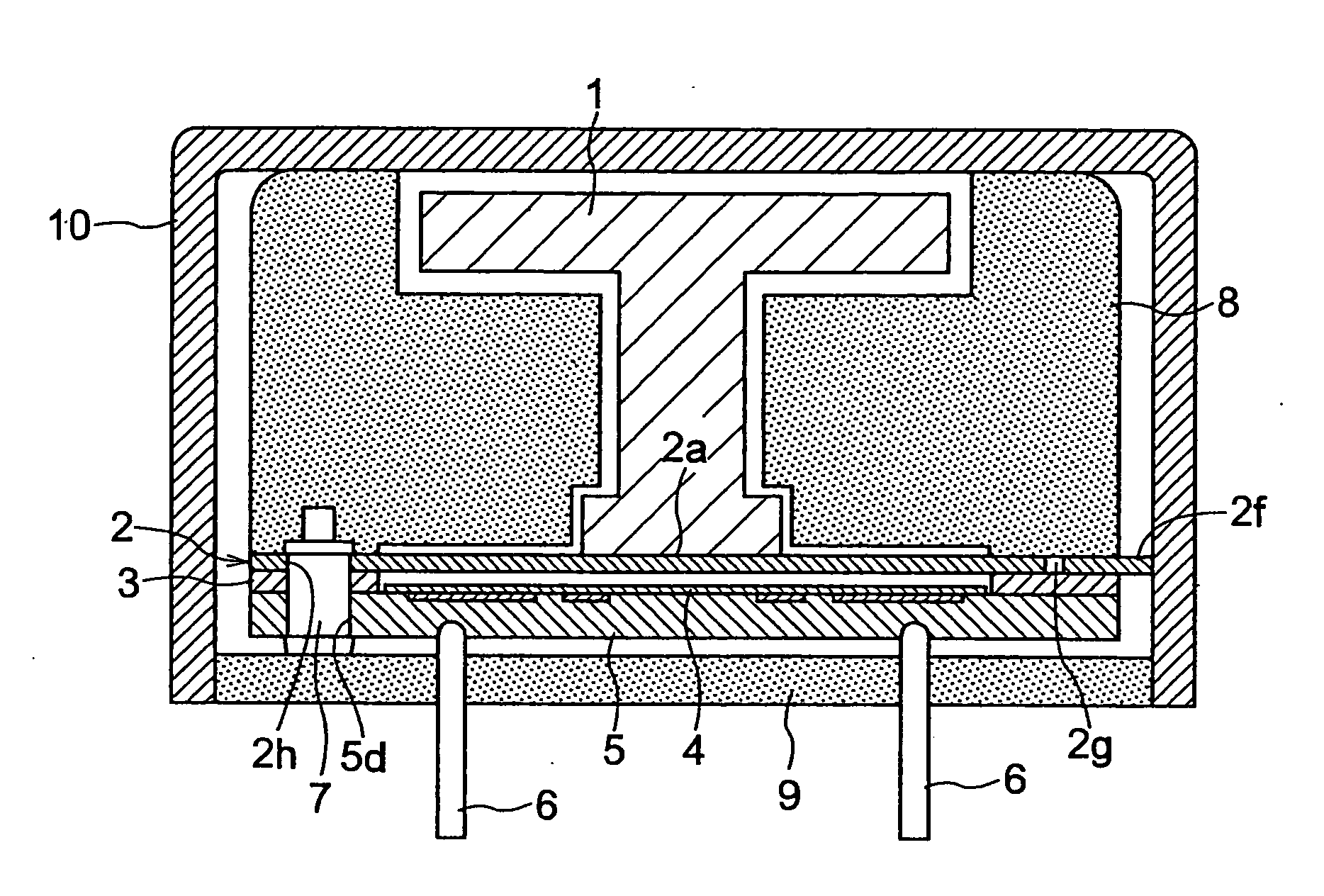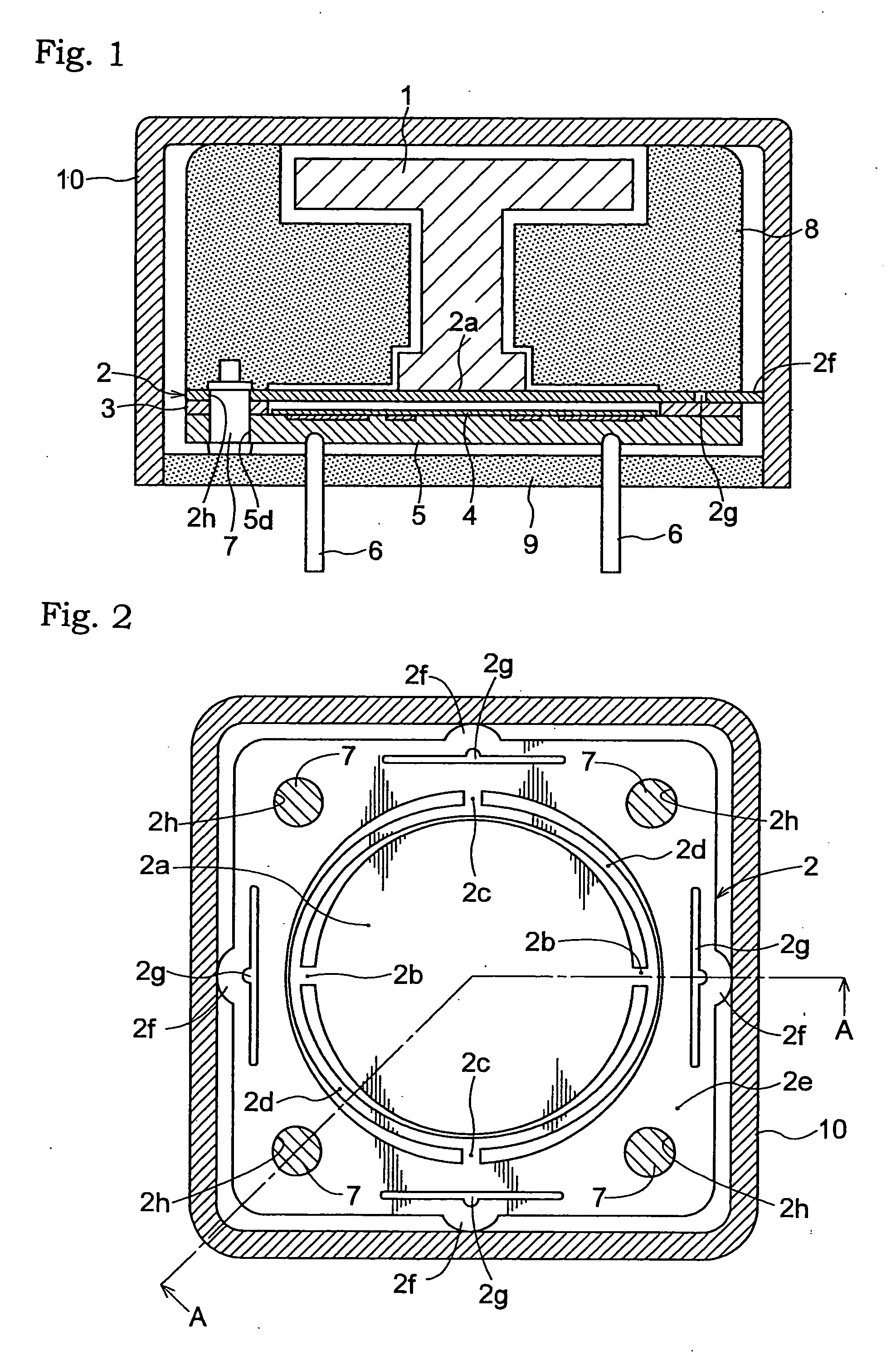Acceleration sensor
a sensor and acceleration technology, applied in the field of acceleration sensors, can solve the problems of sensor shock resistance reduction in the time of sensor falling, inability to anticipate a large amount of power supply, and inability to improve sensitivity electrically, etc., to achieve accurate detection of capacitance variations, facilitate assembly, and facilitate the effect of reaction
- Summary
- Abstract
- Description
- Claims
- Application Information
AI Technical Summary
Benefits of technology
Problems solved by technology
Method used
Image
Examples
Embodiment Construction
[0040] A preferred embodiment of the acceleration sensor according to the present invention will be described hereinafter with reference to the drawings.
[0041] As shown in FIG. 1, the acceleration sensor according to the invention includes a conductive case 10 of channel-shaped section having a bottom at one end, and an opening at the other end. The case 10 contains an electrode substrate 5 having fixed electrodes on one surface thereof, a diaphragm 2 disposed at a predetermined distance to this electrode substrate 5 across a spacer 3 and having one end thereof opposed to the fixed electrodes and acting as a movable electrode, and a weight 1 disposed centrally of the other surface of the diaphragm 2. The sensor is constructed to detect acceleration in three orthogonal directions based on variations in capacitance between the fixed electrodes (electrode substrate 5) and the movable electrode (diaphragm 2).
[0042] In this embodiment, the case 10 has a rectangular section parallel to ...
PUM
 Login to View More
Login to View More Abstract
Description
Claims
Application Information
 Login to View More
Login to View More - R&D
- Intellectual Property
- Life Sciences
- Materials
- Tech Scout
- Unparalleled Data Quality
- Higher Quality Content
- 60% Fewer Hallucinations
Browse by: Latest US Patents, China's latest patents, Technical Efficacy Thesaurus, Application Domain, Technology Topic, Popular Technical Reports.
© 2025 PatSnap. All rights reserved.Legal|Privacy policy|Modern Slavery Act Transparency Statement|Sitemap|About US| Contact US: help@patsnap.com



